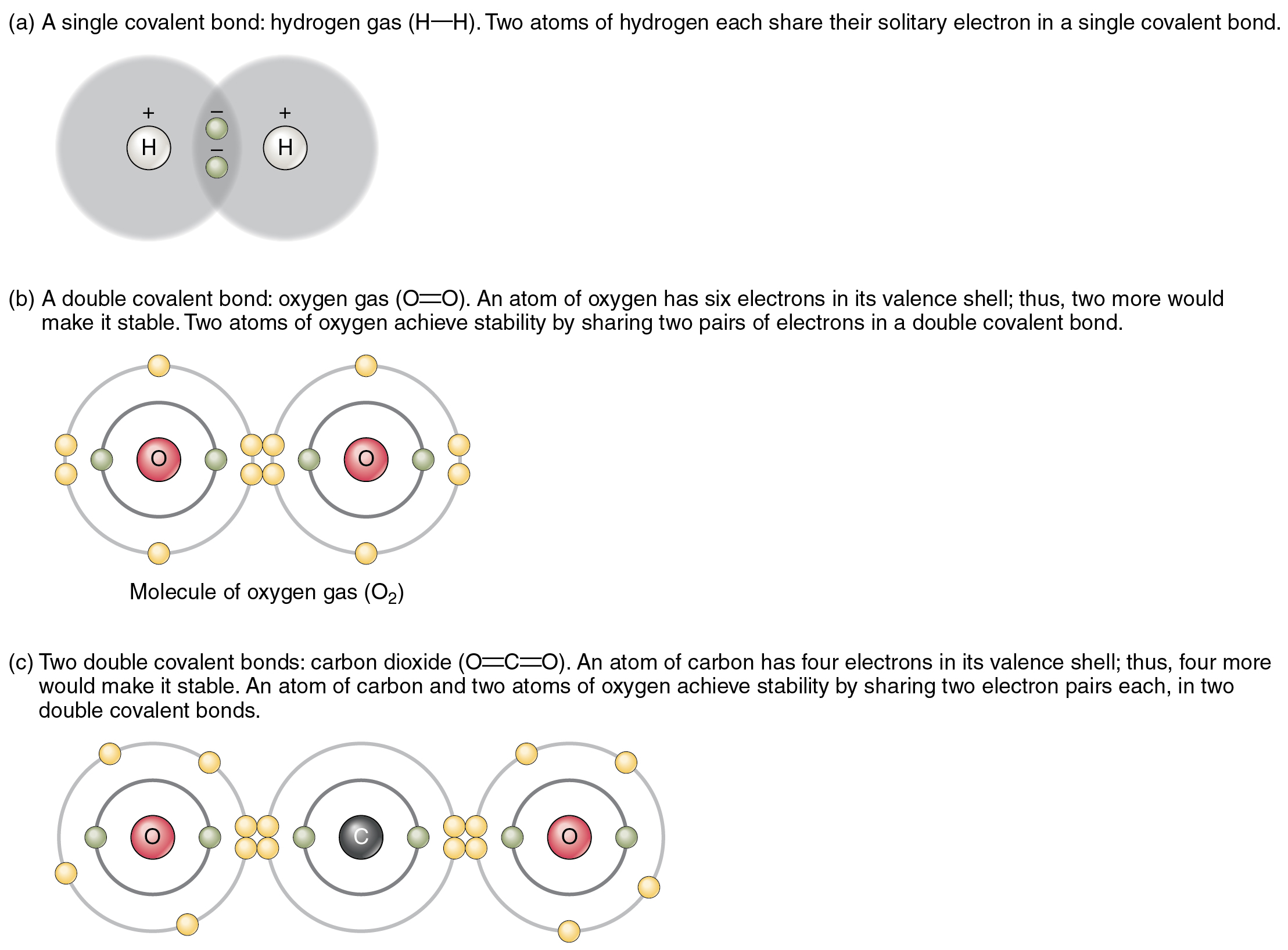In the case of cl 2, each atom starts off with seven valence electrons, and each cl shares one electron with the other, forming one covalent bond: This means that there’s a space for two more electrons in. This is summarized in the table below. Substances with small molecules have low melting and boiling. Properties of small molecules and polymers.
Group 5a form 3 bonds; Group 6a form 2 bonds; The number of bonds an atom can form depends on that atom's valence electrons. To apply the octet rule to covalent compounds.
Asked 6 years, 8 months ago. A covalent bond is a chemical bond that involves the sharing of electrons to form electron pairs between atoms. An atom can go any distance to complete its octet!
Asked 6 years, 8 months ago. For most elements, a full outer shell is eight. Covalent bonding occurs when pairs of electrons are shared by atoms. The number of electrons required to obtain an octet determines the number of covalent bonds an atom can form. Carbon the most common atom in organic compounds can form four bonds because it has 4 valence.
Properties of small molecules and polymers. Web we refer to this as a pure covalent bond. Covalent bonding occurs when pairs of electrons are shared by atoms.
The Number Of Electrons Required To Obtain An Octet Determines The Number Of Covalent Bonds An Atom Can Form.
Web this means that the number of covalent bonds an atom can form is the same as the number of electrons needed to get a full outer shell. However, their structures are different so some of their. Electrons shared in pure covalent bonds have an equal probability of being near each nucleus. By sharing their outer most (valence) electrons, atoms can fill up their outer electron shell and gain stability.
A Covalent Bond Is A Shared Pair Of Electrons.
These values also help to classify the covalent bond into two kinds, polar and nonpolar. Group 5a form 3 bonds; Web the number of electrons required to obtain an octet determines the number of covalent bonds an atom can form. This is summarized in the table below.
Web Typically, The Atoms Of Group 4A Form 4 Covalent Bonds;
Web we refer to this as a pure covalent bond. Therefore the maximum number of covalent bonds should be said to be 7, with the exception of some noble gases. Web here, boron forms three covalent bonds, using all three of its valence electrons in single bonds to the hydrogens. The number of electrons required to obtain an octet determines the number of covalent bonds an atom can form.
Will Form Either One, Two, Three Or Four Covalent Bonds With.
Web to describe how a covalent bond forms. Asked 6 years, 8 months ago. These electron pairs are known as shared pairs or bonding pairs. Web typically, the atoms of group 4a form 4 covalent bonds;
Web meallic elements can definiely have more than eight valence electrons, however they do not tend to form covalent bonds. Therefore the maximum number of covalent bonds should be said to be 7, with the exception of some noble gases. A covalent bond is a shared pair of electrons. Group 5a form 3 bonds; Group 5a form 3 bonds;






